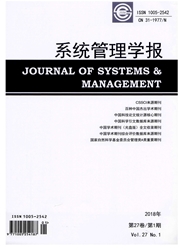

 中文摘要:
中文摘要:
针对复杂金融网络中流动性冲击和流动性救助的系统外部效应和不同风险场景下的流动性救助策略选择问题,以大额支付系统网络为对象,运用数学建模和仿真模拟建立和验证了系统风险传染模型,并基于该模型比较了不同场景不同流动性救助水平下不同救助策略的绩效。结果表明:在所选择的4种个体不完全救助策略和3种个体完全救助策略中,均衡救助策略在绝大多数情况都严格优于其他个体不完全救助策略,这反映了范围救助外部效应的存在;而首先救助受冲击规模较小或救助效率较高参与者的两种个体完全救助策略则又要优于均衡救助策略,这反映了完全救助外部效应及其与范围救助外部效应并存的重要性。
 英文摘要:
英文摘要:
For the systemic externalities of liquidity shocks or liquidity rescue, and choice of different liquidity rescue strategies under different risky scenarios in a financial complex network, from the viewpoint of large value payment system (LVPS), we construct and demonstrate a contagion model of systemic risk, and study the performance of different rescue strategies under different liquidity rescue levels and different scenarios, through mathematic modeling and simulation. The equilibrium strategy out of four selected individual non-full rescue strategies is dominant in most situations, which demonstrates the existence of scope-externality of rescue. However, two individual full-rescue strategies, which rescue the small shocked members or high efficiently rescued members first, are better than the equilibrium strategy.
 同期刊论文项目
同期刊论文项目
 同项目期刊论文
同项目期刊论文
 期刊信息
期刊信息
